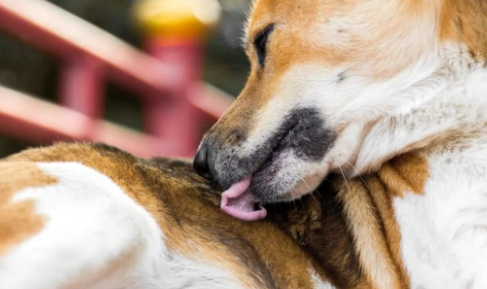You’re brushing your dog when you notice a red, raw patch on their skin. It’s moist, warm, and they keep licking it. Your first thought might be: how did this happen so fast? Your second: how do I fix it—safely and quickly?
This is what many pet parents face when dealing with hot spots, a common and painful skin issue in dogs. Hot spots can appear overnight, spread rapidly, and cause significant discomfort.
In this article, we’ll walk you through how to treat hot spot on dogs in five effective steps and how plant-based solutions like Puainta® Natural Hot Spot Spray can be part of a fast, safe recovery plan.
What Are Hot Spots—and Why Do They Spread So Fast?
Hot spots, formally known as acute moist dermatitis, are inflamed, infected skin lesions. They’re usually red, moist, and painful. They often show up on areas your dog can easily lick or scratch—like the hips, legs, paws, or neck.
These skin lesions can be caused by:
Allergies (food, environmental, or flea-related)
Moisture trapped under the fur (from swimming or rain)
Insect bites or skin injuries
Poor grooming habits
Boredom or anxiety-related licking
What starts as a small irritation can quickly worsen. Your dog’s constant licking, chewing, or scratching can turn a minor itch into an open wound. That’s why knowing how to treat hot spot on dogs fast is crucial.
✅ Step 1: Trim or Shave the Fur Around the Hot Spot
The first step in treating a hot spot is exposing it to air. Moisture fuels bacterial growth, so it’s important to remove the fur around the lesion to let the area dry out.
Use pet-safe grooming scissors or clippers to carefully trim the hair around the affected spot. If your dog is in pain or uncooperative, consider asking a groomer or vet to do this for you.
✅ Step 2: Gently Clean the Affected Area
Once the area is exposed, it’s time to clean. This removes bacteria, debris, and irritants that could worsen the wound.
Use warm water and a gentle, non-stinging cleanser. Avoid hydrogen peroxide or alcohol-based products—they can slow healing and cause discomfort.
Gently pat the area dry with a clean towel. Don’t rub. The goal is to clean without irritating the skin further.
✅ Step 3: Apply a Natural Anti-Itch Spray Like Puainta®
Now comes the crucial part: relieving your dog’s itching and calming the skin to stop the self-trauma cycle.
This is where Puainta® Natural Hot Spot Spray for Dogs and Cats fits in beautifully. Made with botanical ingredients like:
Tree Peony Bark Extract – soothes inflammation
Cortex Dictamni Extract – helps reduce redness and allergic reactions
Sophora Flavescens Root Extract – supports the skin’s immune defenses
This spray is alcohol-free, non-stinging, and safe even if licked—making it ideal for sensitive hot spot areas. Pet owners love it because it calms the skin without harsh chemicals or synthetic ingredients.
Apply the spray 2–3 times daily, saturating the affected skin. Continue use for at least 5–7 days or until the hot spot visibly improves.
✅ Step 4: Prevent Licking and Scratching
Even the best treatment won’t work if your dog keeps irritating the wound. You need to interrupt the lick-scratch cycle.
Here’s how:
Use a soft Elizabethan collar (e-collar) or inflatable recovery collar
Try paw booties if the hot spot is on the legs or paws
Distract your dog with interactive toys or chew-safe bones
Provide calming support if your dog is licking due to anxiety
✅ Step 5: Monitor Healing and Support Skin from Within
Watch the area closely over the next few days. Signs of improvement include:
Less redness and swelling
No more oozing or moisture
Reduced licking or scratching
If the spot worsens or becomes more painful, contact your vet—it could be infected and require oral antibiotics.
To support long-term skin health:
Feed a balanced diet with essential fatty acids
Keep your dog hydrated
Groom regularly and keep your dog’s coat dry
Use natural sprays like Puainta® preventatively during allergy seasons or after swimming
Preventing Future Hot Spots
Prevention is just as important as treatment. Here are a few ways to reduce the risk of hot spots coming back:
Dry your dog thoroughly after baths or swims
Treat fleas and ticks consistently
Brush regularly to prevent matting and trapped moisture
Keep your dog’s mind active and stress levels low
Use Puainta® spray as a regular skin-support step—especially for dogs prone to allergies or licking
Final Thoughts:
A hot spot can turn your happy dog into a restless, itchy mess in no time. But with early action and a gentle, step-by-step approach, you can help your dog feel better fast—without relying on harsh medications.
Knowing how to treat hot spot on dogs means having the tools (and the mindset) to respond calmly, effectively, and compassionately.
Natural, plant-powered care like Puainta® Natural Hot Spot Spray gives pet parents a safe, soothing option that supports healing and comfort—while protecting the bond we share with our furry companions.

